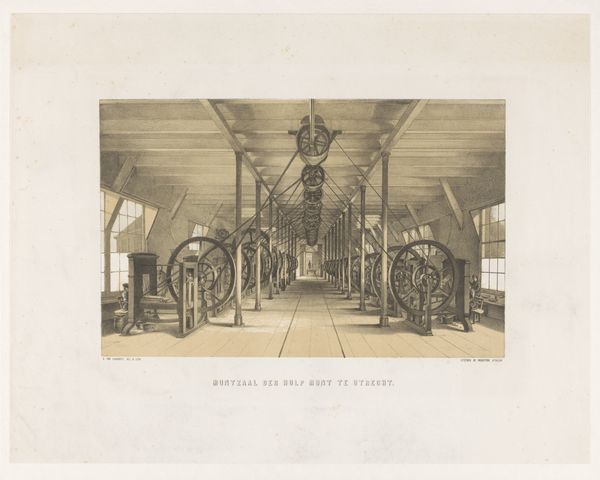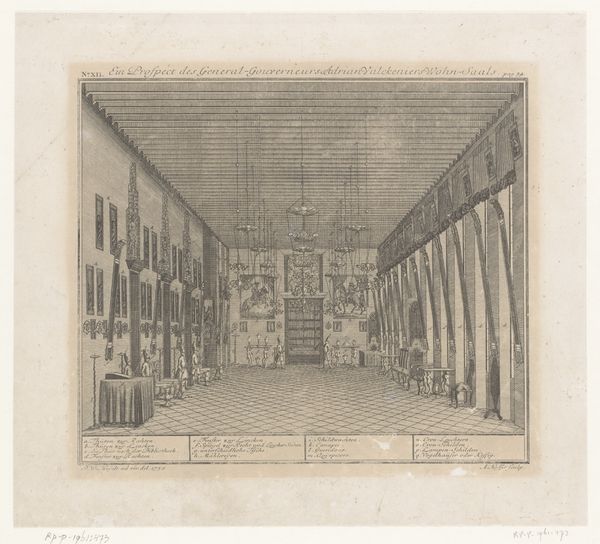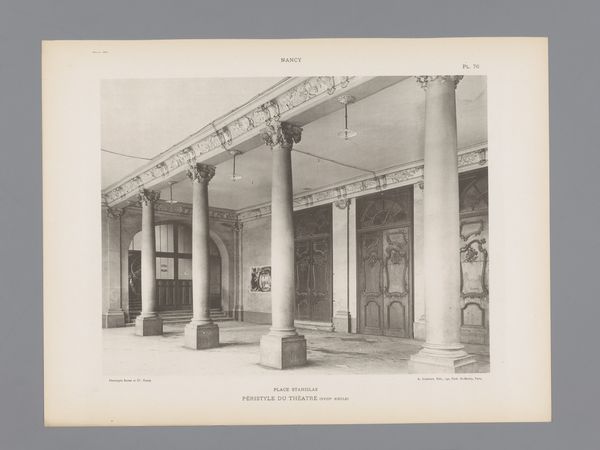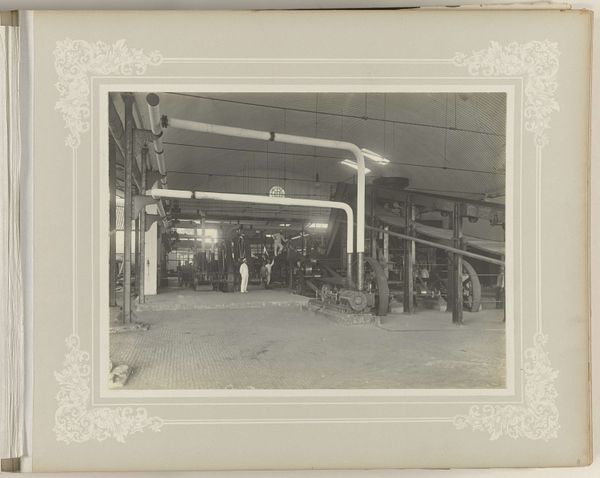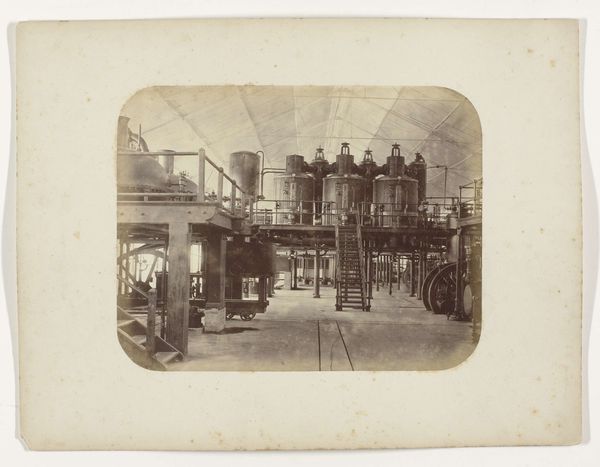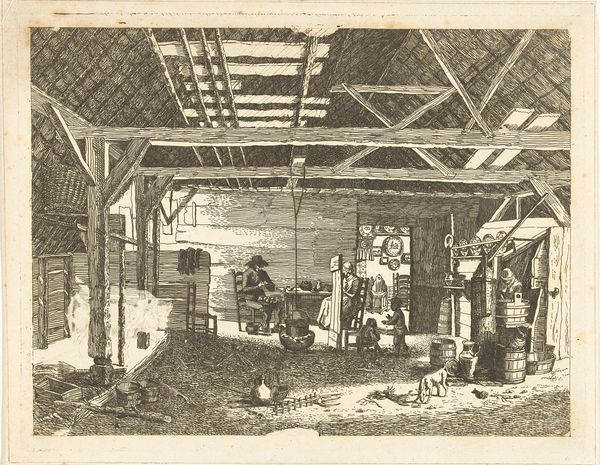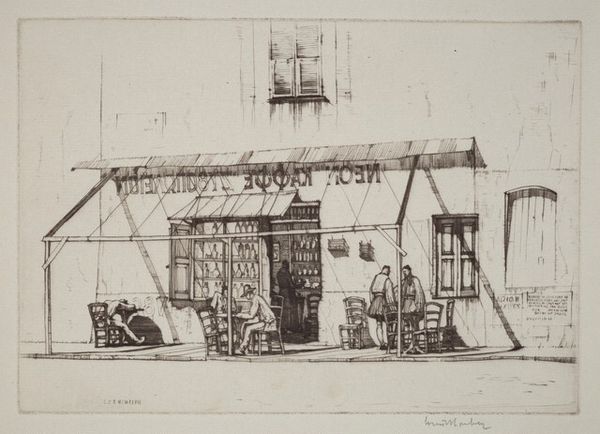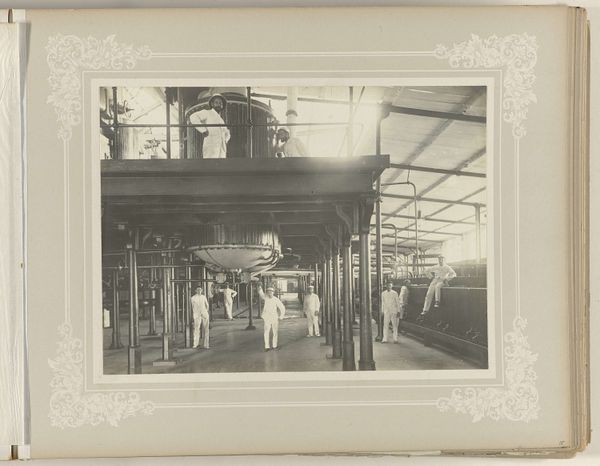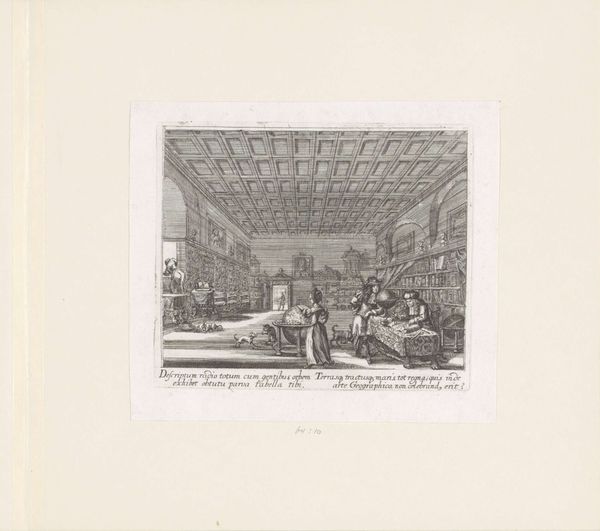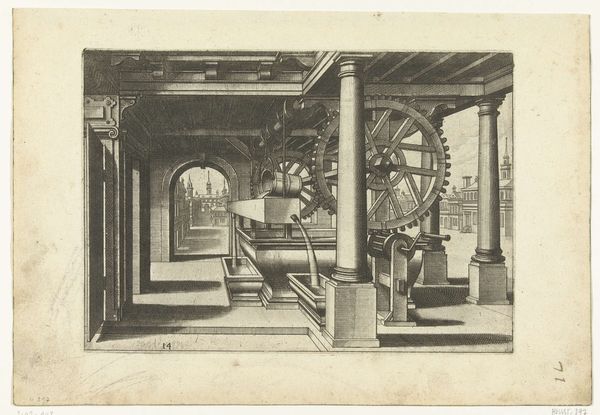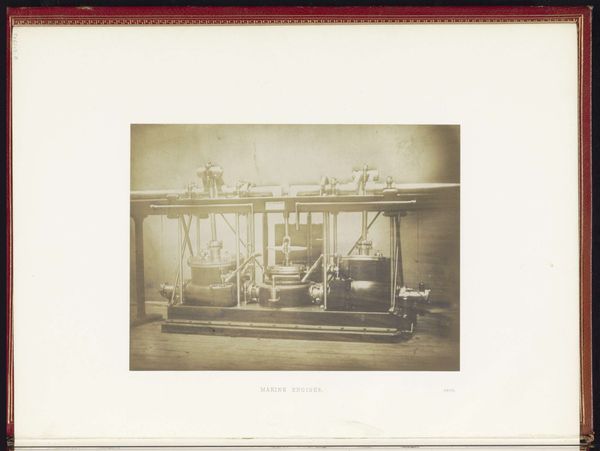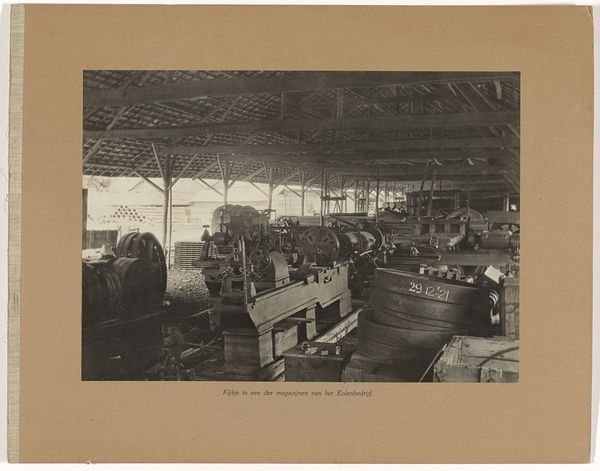
Interieur van het gebouw van de Hulpmunt in Utrecht met arbeiders 1855
0:00
0:00
print, engraving
# print
#
genre-painting
#
history-painting
#
engraving
#
realism
Dimensions: height 425 mm, width 545 mm
Copyright: Rijks Museum: Open Domain
Curator: Here we have "Interior of the Building of the Auxiliary Mint in Utrecht with Workers," an engraving created by Dirk van Lokhorst in 1855. Editor: The immediate impression is one of oppressive industrialization, a feeling evoked by the repetitive machinery dominating the composition. It's quite stark. Curator: Indeed. Lokhorst captures a moment in Dutch history when industry was rapidly transforming society. Note the prominent wheels. Their presence goes beyond mere function; they represent the relentless, driving force of mechanization. The coin itself becomes an unintentional symbol. Editor: I agree; these aren’t mere portraits of labor. The arrangement and treatment create an almost relentless rhythm—horizontal lines emphasizing the length of the workspace, countered by the circles of the wheels, drawing you deeper. But what does it *mean*? Curator: Perhaps the uniformity suggests a shift toward mass production and the depersonalization of labor, yet these workers don't appear as exploited; a potential commentary about wealth and the idea of security. It also serves as a historical record, memorializing this pivotal time. The history itself. Editor: So, are the workers and mint machinery supposed to connect us with a period of rapid industrial growth? There’s a clinical coldness about the depiction of work, a far cry from idealized pastoral images. What I take from Lokhorst here is not just a documentary impulse but a deeper understanding about our social narrative and visual interpretation, a sign for future artistic reflection about society’s ever-evolving narrative. Curator: It invites reflection on our relationship with labor and technological advancements even today. Looking closely shows these men making money…to live! What we deem acceptable changes with generations. The image, by virtue of existing, becomes the very coins the people need, but only the artwork stays intact. Editor: An image wrought with visual austerity reveals the cold aesthetics and stark truths of early industrial society; there is also truth in beauty here as Lokhorst used his talent to capture this pivotal change.
Comments
No comments
Be the first to comment and join the conversation on the ultimate creative platform.
